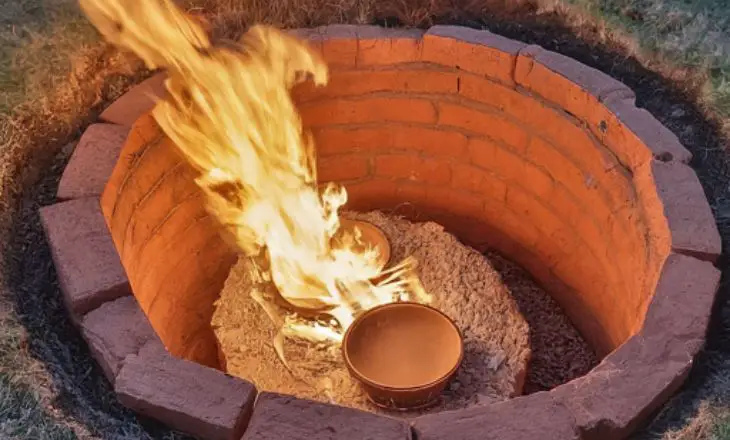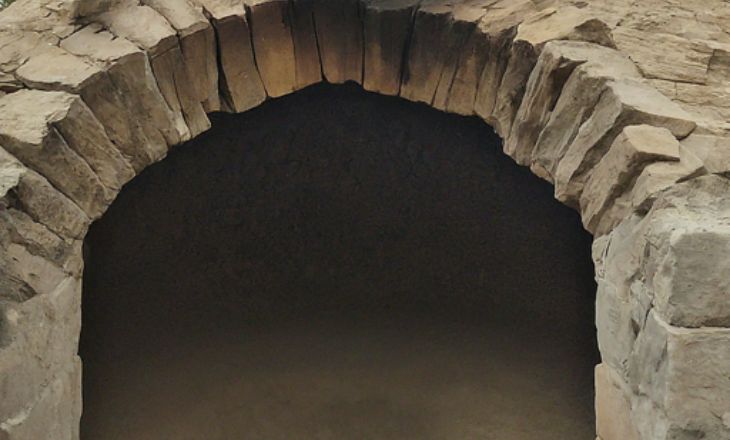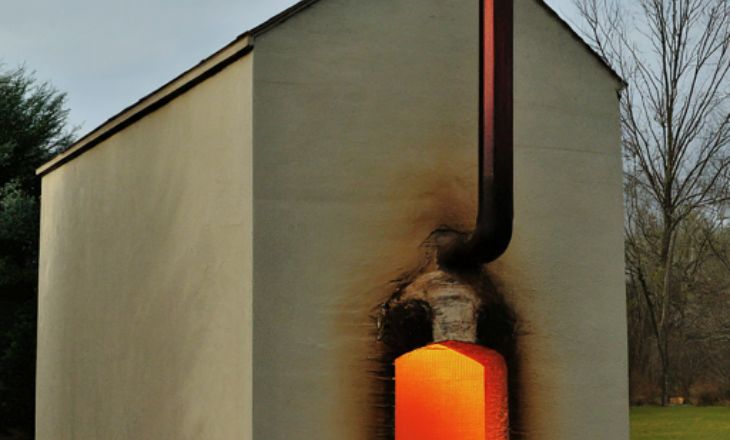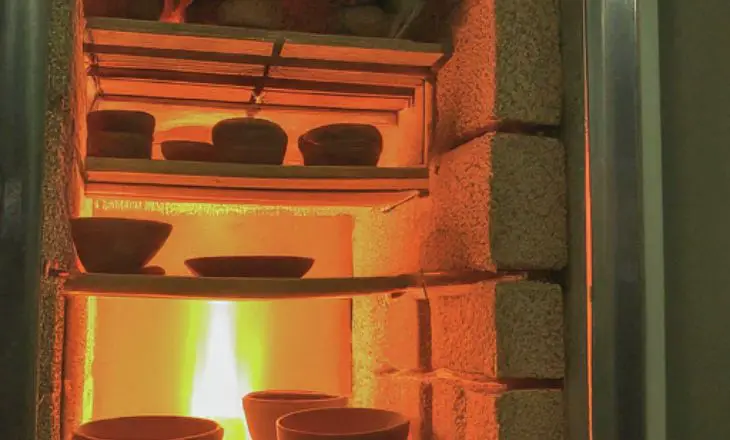A time when ancient civilizations relied on the ingenuity of their ancestors to create beautiful ceramics with nothing but earth, fire, and skill. In today’s fast-paced world of technology and convenience, the idea of creating your primitive kiln at home may seem like a distant dream. With a bit of creativity and determination, you can transport yourself back to a simpler time and experience the satisfaction of firing your pottery using methods passed down through generations.
Primitive Kiln at Home
For those looking to step into the world of pottery firing at home, experimenting with a primitive kiln can be a rewarding experience. The simplicity and back-to-basic nature of using surface fires or shallow pits may appeal to those seeking a more authentic and hands-on approach to pottery firing. With its inefficiency in terms of heat retention, this method offers a glimpse into how early ceramics were fired and allowed for a deeper connection with the art form.

Working with a primitive kiln also allows one to understand the nuances of heat distribution and combustion. By closely monitoring the process and adjusting wood placement, one can gain valuable insights into how different factors influence the outcome of the fired pottery. This hands-on approach fosters a greater appreciation for the ancient craft of pottery making and encourages experimentation with different firing techniques to achieve desired results.
Safety is key
Safety should always be the top priority when working with a kiln. Never leave the kiln unattended; a small oversight can lead to dangerous situations. Having a fire extinguisher within reach at all times is crucial in case of emergencies. Proper ventilation is also key to ensure that any fumes or gases produced during firing are safely extracted from the workspace.
Experimenting with different kiln designs like pit or updraft kilns can offer unique results in your pottery creations. Each design has its own set of challenges and benefits, requiring some practice to master. Working with these traditional tools allows for a deep connection to ancient practices while creating modern pieces of art.
Pit Kilns
The remarkable aspect of pit kilns is their ability to create a controlled firing environment without the need for advanced technology. By stacking pottery pieces on top of the fuel inside the pit and covering them with more fuel and a layer of soil, ancient potters could achieve the high temperatures necessary for firing ceramics. The slow heating and cooling process in pit kilns allowed for gradual drying and hardening of the clay, resulting in durable and well-fired pottery.

Pit kilns are still used by some modern potters seeking a more traditional approach to firing ceramics. The rustic charm and unique effects produced by pit firing add a depth of character to each piece that cannot be replicated in more contemporary kilns.
Firing Pottery in a Pit Kiln
Firing pottery in a pit kiln was not just about the result, but also about the intimate connection to the earth. The process of digging a pit, stacking it with layers of pottery and fuel, then witnessing the transformation through fire was a deeply primal experience. Potters had to trust their instincts and knowledge of the materials, as there was no digital display indicating temperature or time.
The unpredictability of pit firing added an element of surprise to each creation. The flames danced and flickered, leaving behind unique markings that told a story of heat and time. In a world driven by instant gratification, the slow and methodical nature of pit kiln firing serves as a reminder of the beauty found in patience and tradition.
Updraft Kilns
Updraft kilns may not offer the precision and efficiency of modern electric or gas kilns, their charm lies in their simplicity and connection to traditional pottery practices. The natural variations in heat distribution can create unique effects on pottery, adding a touch of unpredictability and artistry to the firing process. For some potters, this element of surprise is what keeps them coming back to updraft kilns despite their limitations.

The relative ease of building an updraft kiln also appeals to many hobbyists looking to explore pottery as a craft. The hands-on experience of firing using this method offers a deeper appreciation for the ancient art of ceramics and allows for more experimentation with different firing techniques.
How to Diy Pottery Kiln
When it comes to building your DIY pottery kiln, precision and care are essential. Ensuring that each firebrick is securely in place with the high-temperature mortar will guarantee the structural integrity of your kiln. Incorporating insulation materials like a ceramic fiber blanket will help maintain consistent temperatures for firing your pottery pieces to perfection.
Proper ventilation can make a significant difference in how evenly your pottery pieces are fired. Incorporating vents or openings strategically throughout the design to facilitate optimal circulation of heat and air. This attention to detail will elevate the quality of your pottery creations and give you more control over the firing process.
Simple Convection Kiln Plans
Building a simple convection kiln at home allows you to experiment with a traditional pottery firing technique. Here’s a breakdown to get you started.
Materials and Construction
When constructing your convection kiln, pay careful attention to sealing any gaps or openings in the chamber to minimize heat loss and ensure consistent temperatures throughout the firing process. Installing a digital temperature controller can help you maintain precise control over the heating cycle, resulting in more accurate and reliable firings. By combining proper insulation techniques with modern temperature monitoring tools, you can elevate your pottery firing experience and achieve professional-quality results right at home.
Safety First
When it comes to firing up your kiln for pottery projects, safety should always come first. It’s important to have a designated outdoor space away from any flammable materials where you can safely set up your kiln. Always keep a close eye on the kiln while it’s burning and have a fire extinguisher nearby in case of any unexpected emergencies. Ventilation is key during the firing process to minimize the risks of carbon monoxide exposure, so make sure there’s proper airflow throughout.
Firing the Convection Kiln
Firing your convection kiln requires a patient and controlled approach. Before firing, consider whether your pottery needs a bisque firing at a lower temperature first, especially for delicate pieces. This helps remove moisture and prevents cracking during the final high-heat firing.

When firing your convection kiln, precision and patience are key. Prioritize a careful approach to ensure the success of your pottery pieces. By starting with a small fire and gradually increasing the heat, you can prevent any potential damage or cracking to your delicate artwork. Monitoring the temperature using tools like peepholes or cones allows you to make necessary adjustments throughout the firing process for optimal results.
Conclusion
Building a primitive kiln at home opens up a fascinating window into the ancient art of pottery-making. It is an opportunity to delve into the techniques and resourcefulness of early potters while creating your unique pieces. While it demands careful planning and adherence to safety measures, the sense of achievement in firing your creations is truly gratifying. Gather your supplies, choose a suitable spot, and embark on your primitive pottery firing adventure today.
FAQ’s
Can you use an oven as a kiln?
You can fire pottery in your home oven, but it isn’t going to be as hot as a kiln you would buy for your home studio or use at a pottery class.
Can you kiln dry at home?
Kiln drying your wood at home can be a great way to sustainably harvest the materials around you, and dry it fast enough to build furniture with. If the furniture is made with wood that is too wet, it will continue to dry and crack, possibly ruining the piece.
Can clay dry without fire?
If it remains unfired it will eventually crack and fall apart. Water-based clay becomes brittle when dry. I don’t have a kiln either but I looked around and found a ceramic studio that does firing for a small fee per piece, depending on the size.
